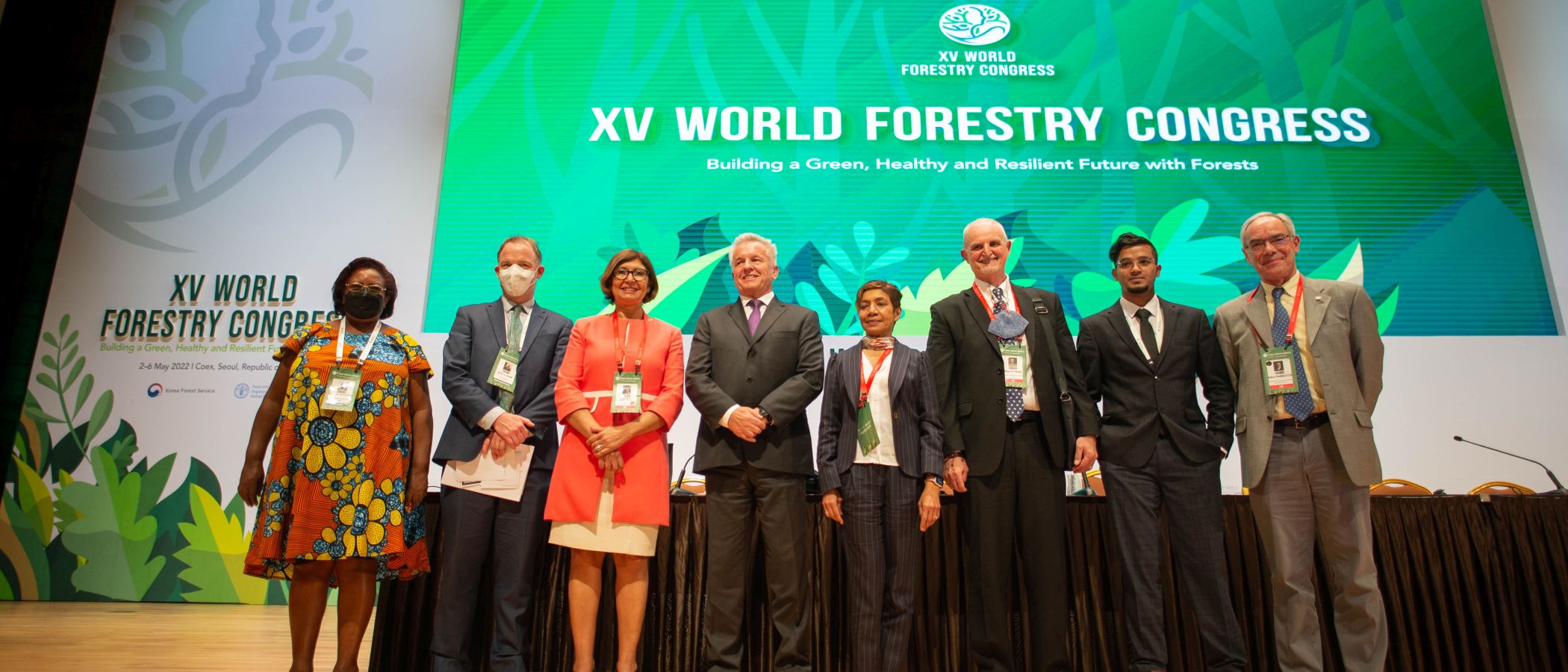
Maria Helena Semedo, Deputy Director-General, FAO and Chair of the Collaborative Partnership on Forests.
Robert Nasi, Director-General of CIFOR and Managing Director of CIFOR– ICRAF and Vice-Chair of the Collaborative Partnership on Forests.
Partnerships are crucial to accelerate progress towards achieving the Sustainable Development Goals (SDGs), as highlighted by SDG 17, which focuses on global partnerships and the mobilization of financial resources.
No single organization has the mandate, power or resources to deliver alone transformative, systemic change. It is only by bringing together governments, intergovernmental organizations, farmers and producers, civil society, scientists, academia and the private sector that we can mobilize and scale up the technology, innovation, financing and capacity development needed to address today’s complex and interconnected global problems.
This is especially true for the challenges facing forests and for strengthening the contributions of forests and trees to the achievement of the SDGs. Forests offer vital ecosystem services, economic opportunities and are home to much of our terrestrial biodiversity. Today we need to take a triple approach on conservation, restoration and sustainable use of forests.
But halting deforestation, restoring forests and changing the way we manage land requires transdisciplinary collaboration and integrated solutions. The complexity of the direct and indirect drivers of deforestation calls for a combination of innovative policies and regulatory frameworks, private and public leadership, citizen-led movements, appropriate finance, knowledge generation and exchange of experiences, and technical and technological cooperation. No single organization can deliver these alone.
Successful transformative partnerships must be based on trust, built and developed between partners. In addition, to fully benefit from the comparative advantages of different partners, each one needs to look beyond their specific contribution to how it will fit into the wider effort. In this spirit, the Collaborative Partnership on Forests (CPF) aims to add value and deliver together.
The CPF was created in 2001 as part of the International Arrangement on Forests, which also established the United Nations Forum on Forests (UNFF) – a high-level intergovernmental policy forum that aims “to promote the management, conservation and sustainable development of all types of forests and to strengthen long-term political commitment to this end.”1
The CPF is an informal, voluntary arrangement among 15 international organizations and secretariats that have substantial programmes on forests. CPF members have a shared vision of a world where “by 2030 all types of forests and forest landscapes are sustainably managed, their multiple values are fully recognized, the potential of forests and their goods and services is fully unlocked, and the Global Forest Goals, the SDGs and other global forest-related goals, targets and commitments are achieved.”2
To support countries to achieve these aims, the CPF effectively enhances coherence and synergy on forest-related issues and values among its members.3 Chaired by FAO and with partners from conventions, financial institutions, intergovernmental agencies with a focus on forestry, environment and conservation, and research organizations, the CPF is in a unique position to drive transformational change.
Forests can be a driving force in tackling climate change, food insecurity and biodiversity loss. The CPF is working to show forests can provide solutions to some of the most pressing issues on the global agenda. Among its achievements is the streamlining of global reporting on forest resources, strengthened collaboration on sustainable wood value chains to enhance social, economic and environmental benefits, and stronger forest education. Under the joint initiative Green Finance for Sustainable Landscapes, the CPF boosts bank and investor interest to increase capital flows towards forest and landscape restoration, forest education and practices that would decouple agriculture from deforestation.
The CPF further focuses on forest and landscape restoration, forest communication, scientific information and finance facilitation to help countries design national forest financing strategies, and it supports grassroot leaders through the Wangari Maathai Forest Champions Award.
To be transformative, partnerships must be prepared to continuously self-reflect. The upcoming mid-term review of the International Arrangement on Forests 2024 will include an assessment of the effectiveness, impact and added value of the activities of the CPF to ensure that it continues to support countries in strengthening their implementation of the United Nations Strategic Plan for Forests, and to foster the achievement of the Global Forest Goals and the SDGs. The CPF will do its part to support the future policy directions.
The United Nations Climate Change Conference (COP27) which took place in Sharm el Sheikh, Egypt in November 2022 was a milestone event where agrifood systems were a key priority, with the launch of initiatives, such as Food and Agriculture for Sustainable Transformation (FAST). This historic declaration on forests and land use at COP26 in Glasgow4 in 2021 saw over 140 leaders, accounting for more than 90 percent of the world’s forests, committing to work together to halt and reverse forest loss and land degradation by 2030. At COP27, the CPF played its part in boosting momentum when heads of agencies launched an Action Plan for Turning the Tide on Deforestation for the United Nations system and beyond, emphasizing members’ own commitments and calling for broad concrete action.
Through strategic partnerships such as the CPF, transformational change can be achieved, and barriers to addressing deforestation and forest degradation can be removed. We are all in this together.
This article was first published in Forests for a better world, Unasylva No. 253 – Vol. 73, find the full publication at: https://www.fao.org/documents/card/en/c/cc3427en.
1. Report on the fourth session of the Intergovernmental Forum on Forests. Adopted: United Nations Economic and Social Council, 2000. Resolution 2000/35.
2. CPF. 2020. CPF Strategic Vision Towards 2030. www.fao.org/3/cb5683en/ cb5683en.pdf
3. CPF. 2022. Members of the Collaborative Partnership on Forests. In: CPF. Cited 20 September 2022. www.fao.org/collaborative-partnership-on-forests/members/en
4. COP26 leaders. 2021. Glasgow Leaders’ Declaration on Forests and Land Use. In: UN Climate Change Conference (COP26) at the SEC – Glasgow 2021. Cited 20 September 2022. https://ukcop26.org/ glasgow-leaders-declaration-on-forestsand-land-use